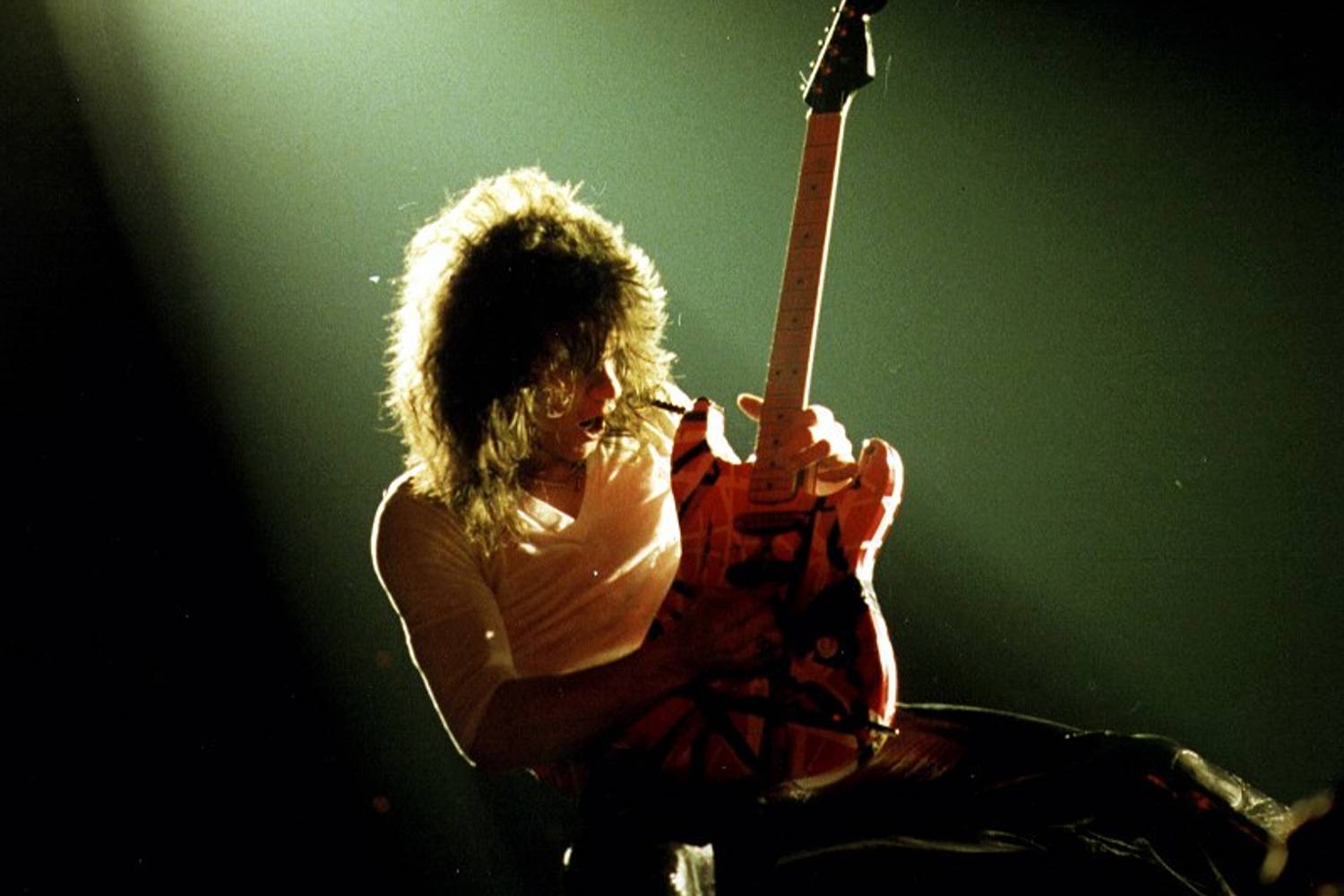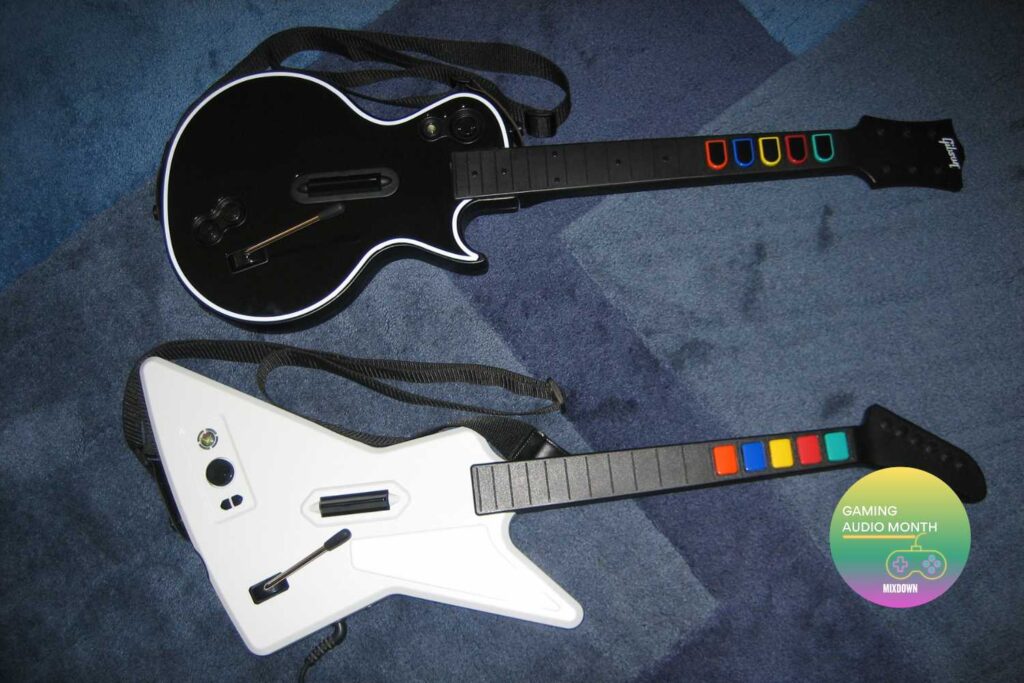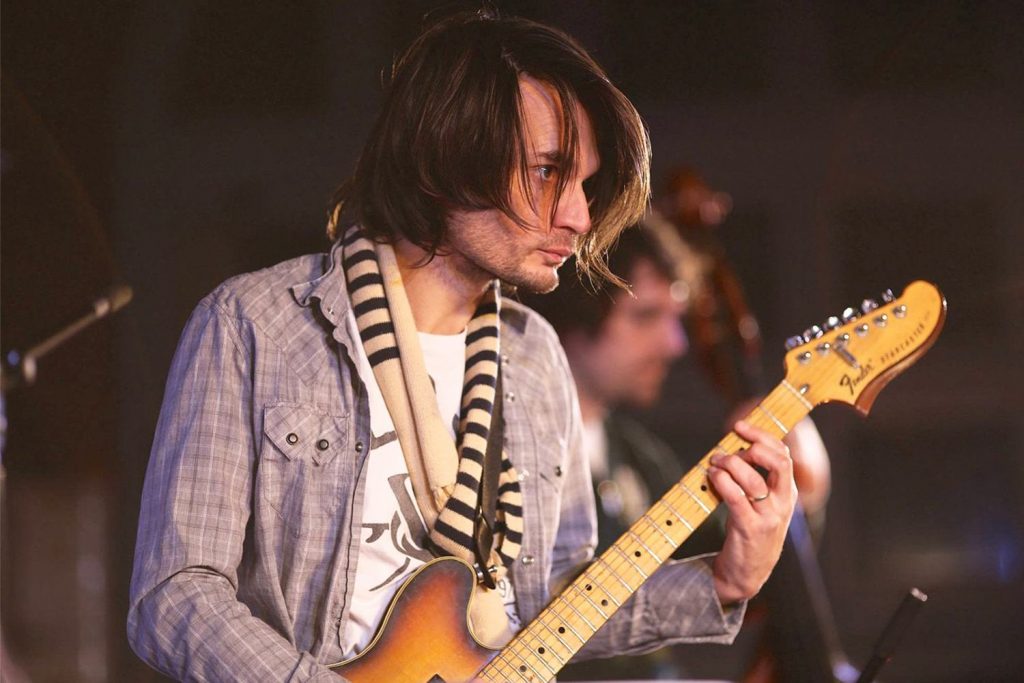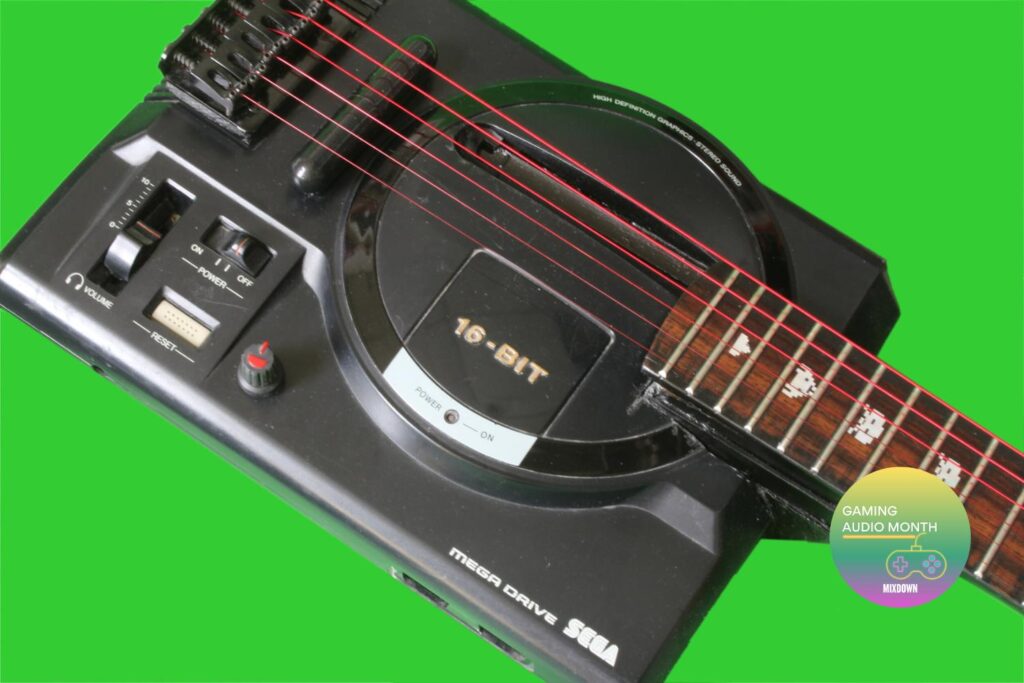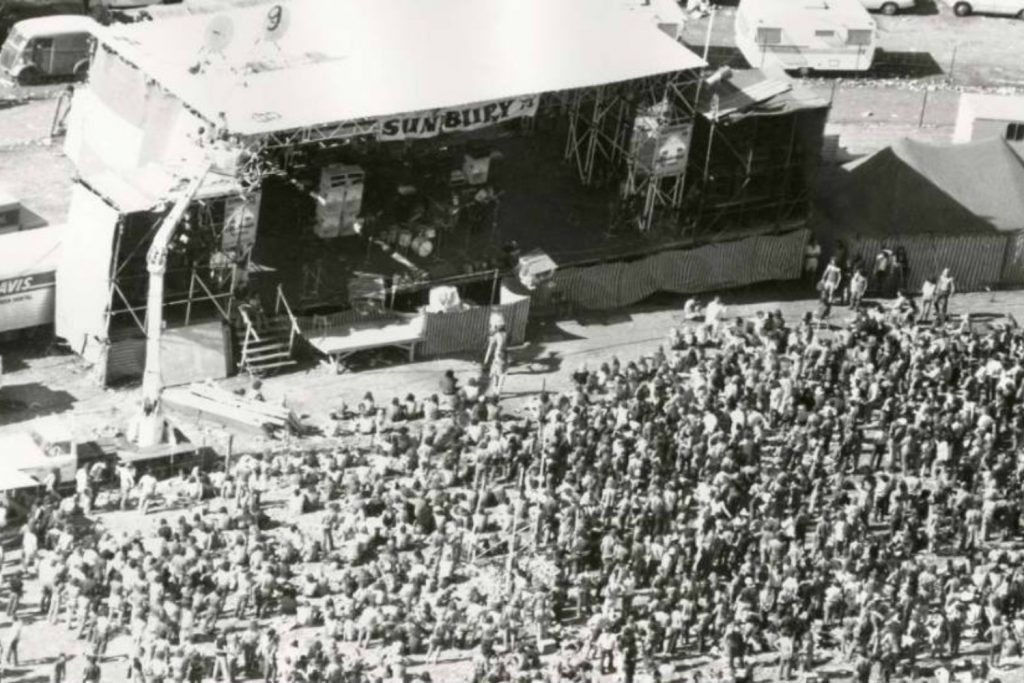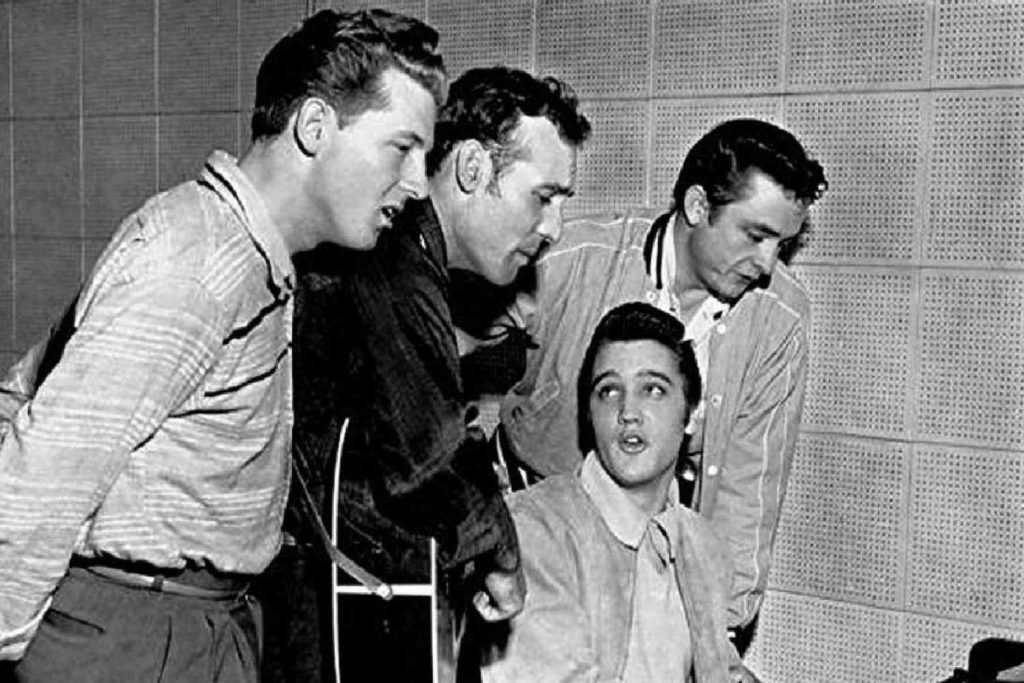Rediscover the magic of the guitarist who shook the world.
As the iconic lead guitarist for Van Halen, Eddie Van Halen and his virtuosic ability on the electric guitar saw him become recognised as one of the best guitarists of the 1980s, and it wouldn’t be an understatement to label him as one of the most important players of all time, second only to his idol, Jimi Hendrix.
With the aid of his bandmates, Eddie Van Halen blazed a trail as a guitarist that few have ever followed. Combining amazing tricks with an uncanny technical proficiency, Van Halen’s playing served as the perfect precursor to the wave of heavy metal that would sweep the ’80s, while his untethered creative curiosity saw endlessly toying with new ideas and equipment. For instance, his embrace of the synthesiser – best exemplified on the band’s blockbuster album 1984 – proved that he was nary to being pigeonholed onto just one instrument.
Read up on all the latest features and columns here.
Yet when Eddie Van Halen was involved, guitars were always part of the bigger picture. When he emerged in the ’70s with a beaten-up, hot-rodded guitar he dubbed the FrankenStrat, Eddie flipped the guitar world on his head, and from there, he never stopped innovating. For forty years, Eddie Van Halen was considered the be-all end-all of endorsees for the musical instrument sector, and his input into research and design in this field produced innumerable innovations that are still being used by most of today’s biggest players.
Working alongside the likes of Kramer, Ernie Ball Music Man, Charvel and Fender, Eddie would help to envision a huge amount of shapes, sounds and designs that would prove to be pivotal in the story of metal’s spread into the mainstream. One only needs to look at the everlasting appeal of the Peavey 5150, one of the most prevalent amps in metal throughout the 1990s and 2000s, to understand just how switched on Eddie was in these departments.
With his passing, Eddie Van Halen leaves a titanium legacy that will be near impossible for any guitarist to top. Today, we’re cherishing his memory by revisiting ten of his most iconic guitar solos over the years, analysing the equipment, technique and attitude that helped enshrine Eddie Van Halen as one of the greatest guitarists of all time.
“Eruption” – Van Halen
Eddie only ever needed one minute and forty two seconds to flip the guitar world onto its head. ‘Eruption’ marked a pivotal moment for six-stringers around the world when it arrived in 1978, with Eddie’s epic solo showcasing the ludicrous two-handed tapping, staccato picking, whammy bar acrobatics and lightning fast fretwork that would go on to define an entire generation of guitar players.
For guitarists listening at home, it was nothing short of a revolution, and even those who turned their nose up at hard rock took note. To this day, ‘Eruption’ stands up as one of the most mind-blowing guitar moments in contemporary music, and I daresay it’ll remain that way forever.
‘Ice Cream Man’ – Van Halen
A cover of Chicago bluesman John Brim’s 1953 standard, ‘Ice Cream Man’ marked a major standout moment on Van Halen’s electrifying debut album, and you can only guess who was responsible for it. After kicking off with an acoustic introduction and jumping into a hard rockin’ blues shuffle in the verses, the band give way for Eddie to let loose in the solo section, and what he unleashed was the stuff of a guitar fever dream.
Wailing Floyd Rose divebombs and intricate harmonics are complemented by Eddie’s incendiary tone and surgical sweeping, creating a sensory overload that instantly went down as one to be remembered. Sure, the grand majority of this tune hasn’t exactly ripened with age, but can you imagine hearing this solo tear through your eardrums in 1978? From start to stop, it’s sensational stuff.
“Spanish Fly” – Van Halen II
Despite being best known as a pioneer of the electric guitar, Eddie wasn’t a man who liked to be pinned down to just one sound. On the Van Halen II cut ‘Spanish Fly’, Eddie proves that his liquid technique certainly wasn’t limited to the electric guitar, delivering a one-minute masterclass up and down the fretboard on a classical guitar to mind-boggling effect.
Many listeners dub ‘Spanish Fly’ to be the ‘acoustic ‘Eruption”, and when you hear it in full, it’s easy to understand why: with nimble speed and sniper accuracy, Eddie rips up the neck, showing off his two-handed tapping mastery and wrangling some obscene harmonics from his instrument as he goes. With ‘Spanish Fly’, Eddie broke free of any notion of him being limited to an electric instrument, and that technique and creativity will always trump any abundance of gear.
“Mean Street” – Fair Warning
The dynamic opener to the band’s fourth album Fair Warning, ‘Mean Street’ is a ballsy hard rock slammer that perfectly exemplifies Eddie’s remarkable control over the Floyd Rose. Whether it’s the ear-splitting screech to open the track, his laser beam lead guitar solo in the middle or the swooping licks to top things off with at the end, Van Halen’s mastery of the whammy bar is something to be reckoned with even by today’s standards.
Another noteworthy aspect of ‘Mean Street’ is that of Eddie’s searing overdriven tone; a byproduct of his hotwired Marshall heads and extensively modified FrankenStrat guitars. When Fair Warning kicked things off with this red hot lead tone right in the forefront, it almost single handedly set the standard for how a guitar solo should sound for the remainder of the ’80s: faster, louder and more explosive than a primed atom bomb. Some got close to Eddie’s sound, and some even managed to successfully replicate his style – but still, no one could come close to doing it the way Eddie did.
“Cathedral” – Diver Down
Yet another brief instrumental masterclass from the Van Halen legend, ‘Cathedral’ might be one of Eddie’s most absurd guitar solos to date – namely, because it sounds absolutely nothing like a guitar should. Combining his ultra-precise two-handed tapping ability with a whacky combination of phaser, EQ and delay, Eddie managed to replicate the darting sounds of a synthesiser and painted a vivid image of what a church service might sound like somewhere up on an alien spacecraft.
Of course, there’s more iconic lead guitar moments or technically proficient passages elsewhere to be found on Diver Down, but if anything, ‘Cathedral’ is testament to just how ahead of the curve Eddie really was during this time.
“Beat It” – Michael Jackson Thriller
Everybody already knew that Eddie Van Halen was the world’s best guitarist in 1982, but his cameo spot on Michael Jackson’s chart-busting ‘Beat It’ elevated his profile to extraordinary new heights. Funnily enough, Eddie thought he was receiving a prank call when Thriller producer Quincy Jones hit his line to ask him to come in and lay down the legendary guitar solo – a classic case of EVH shredding – and remarkably, he didn’t even think to invoice Jackson and co.
“I was a complete fool, according to the rest of the band, our manager and everyone else,” he’d later recall in Michael Jackson: For the Record. “I was not used. I knew what I was doing – I don’t do something unless I want to do it.” Legend has it that during the recording of Eddie Van Halen’s guitar solo, one of the studio monitors in the control room of Westlake Recording Studios literally burst into flame – that’s when you know you’ve laid down a hot take.
“Hot For Teacher” – 1984
1984 is Van Halen’s biggest-selling album by a country mile, having shifted over 10 million units in the US alone, and it’s absolutely packed to the brim with hits: there’s the band’s only Billboard #1 ‘Jump’, the scalding hot ‘Panama’, ‘I’ll Wait’ and of course, ‘Hot For Teacher’. While many of the other tracks on 1984 were indebted to Eddie’s experiments with synthesisers – ‘Jump’ being the most obvious example – ‘Hot For Teacher’ saw the band rest on its laurels and simply do what they did best: bash out some of the fastest, hardest and most obnoxious heavy metal to ever rise from the Sunset Strip.
On ‘Hot For Teacher’, Eddie and his all-too-underrated drumming brother Alex lock in to create a thunderous introduction that serves as a certified steering wheel thumper, before careening into a break neck riff that carries the song like a hot potato. When it comes time to solo, however, Eddie just takes it all up a notch, changing key before ripping out a blistering solo crammed with slur licks, slides, staccato shredding and whopping unison bends. Rock radio had never sounded so commanding.
“Drop Dead Legs” – 1984
‘Drop Dead Legs’ was never released as a single from 1984, and Van Halen never even played it live until 2015, yet astonishingly, it’s one of the band’s most ubiquitous tracks. Best known for its stomping main riff – a clear nod to AC/DC – ‘Drop Dead Legs’ is pretty standard fare for Van Halen, until Eddie’s guitar solo rips through the mix towards the end and takes it from hard rock straight through to jazz-fusion territory to make for one of the band’s most idiosyncratic moments.
In a later interview, Eddie noted that he took inspiration from noted fusion shred head Alan Holdsworth to lay down the eye-popping guitar solo, telling Guitar World that “I was playing whatever I wanted like jazz — a bunch of wrong notes here and there — but it seemed to work.”
“Dreams” – 5150
After singer David Lee Roth departed Van Halen and was replaced by Sammy Hagar, the band began to take a far more contemporary direction that saw them lean further into some of the more commercial sounds of the mid ’80s – a move that saw their first album with Hagar 5150 skyrocket to #1 on the Billboard album charts. What was interesting about this change in direction was how Eddie’s playing evolved to fit it, and it’s these factors that really come into play in one of the record’s most popular cuts, ‘Dreams’.
Although he assumed keyboard duties for the majority of the song, Eddie did whip out some magic towards the end of ‘Dreams’ to deliver two guitar solos, packed with plenty of pinch harmonics and whammy bar acrobatics, of course. However, ‘Dreams’ also acts as one of the guitar hero’s most melodic solos, showcasing both his virtuosic shredding and a competent grasp of melody to remind the world yet again that he certainly wasn’t a one trick pony.
“Right Now” – For Unlawful Carnal Knowledge
After soundtracking parties across the world with their sex-crazed brand of hard rock for more than a decade, Van Halen felt compelled to explore a more socially conscious side of themselves on their first album of the ’90s. As the name of the album may imply, they didn’t exactly manage to avoid sex altogether on 1991’s For Unlawful Carnal Knowledge, but they did give being serious a red-hot crack with ‘Right Now’: an album highlight that’s since gone down in the US as an anthem for change and political movement.
Despite its contemporary sound, Eddie had supposedly written the piano instrumental for ‘Right Now’ back in 1983, but shelved it when none of his bandmates seemed interested in the idea of the track. With Hagar’s newfound lyrical direction, however, the song managed to take on a new light, and is now known as one of the band’s biggest hits, with Eddie’s solo emphasising his ability to tame his virtuosic tendencies in order to best serve the song at hand.
An all-too-short but incredibly sweet guitar solo from Eddie helps to elevate the track to an ecstatic finale, and really puts the icing on the cake of one of the band’s best tracks ever – one that’s taken on a whole new meaning today. Rest in peace, Eddie Van Halen.
Keep reading about Van Halen here.
